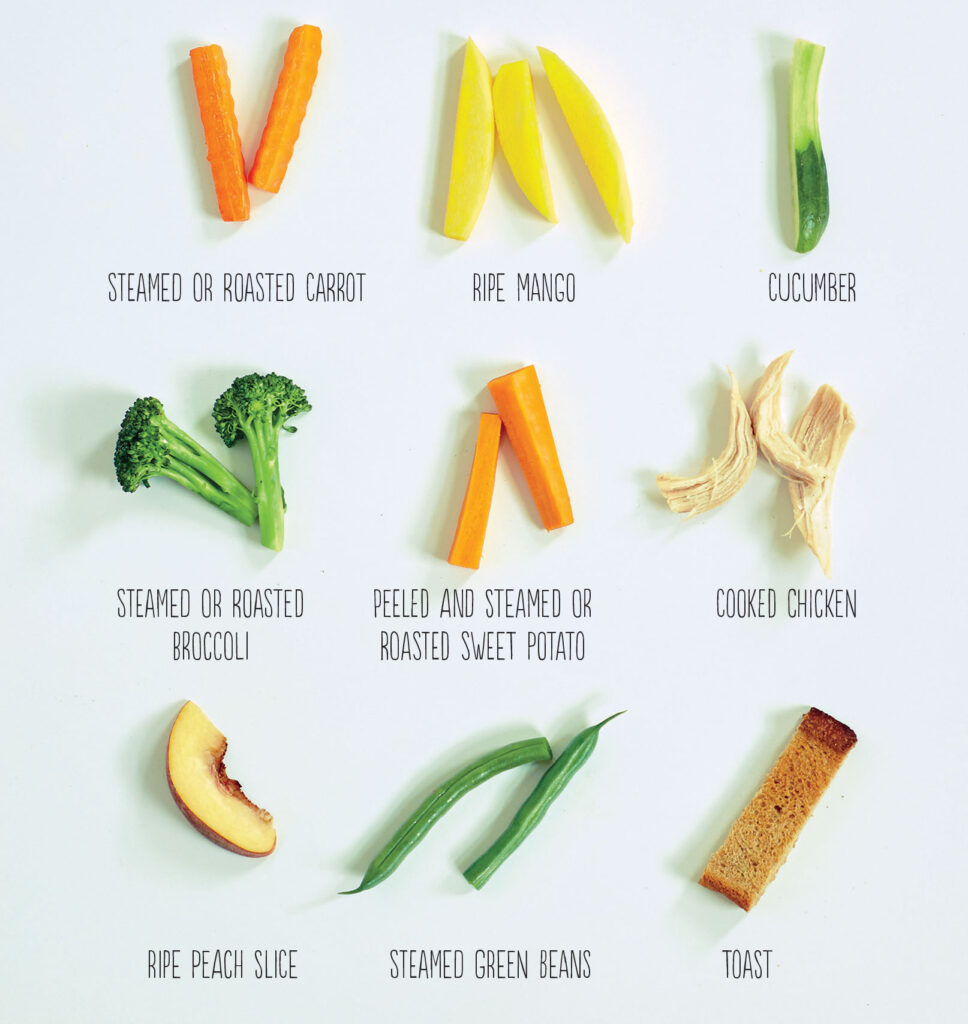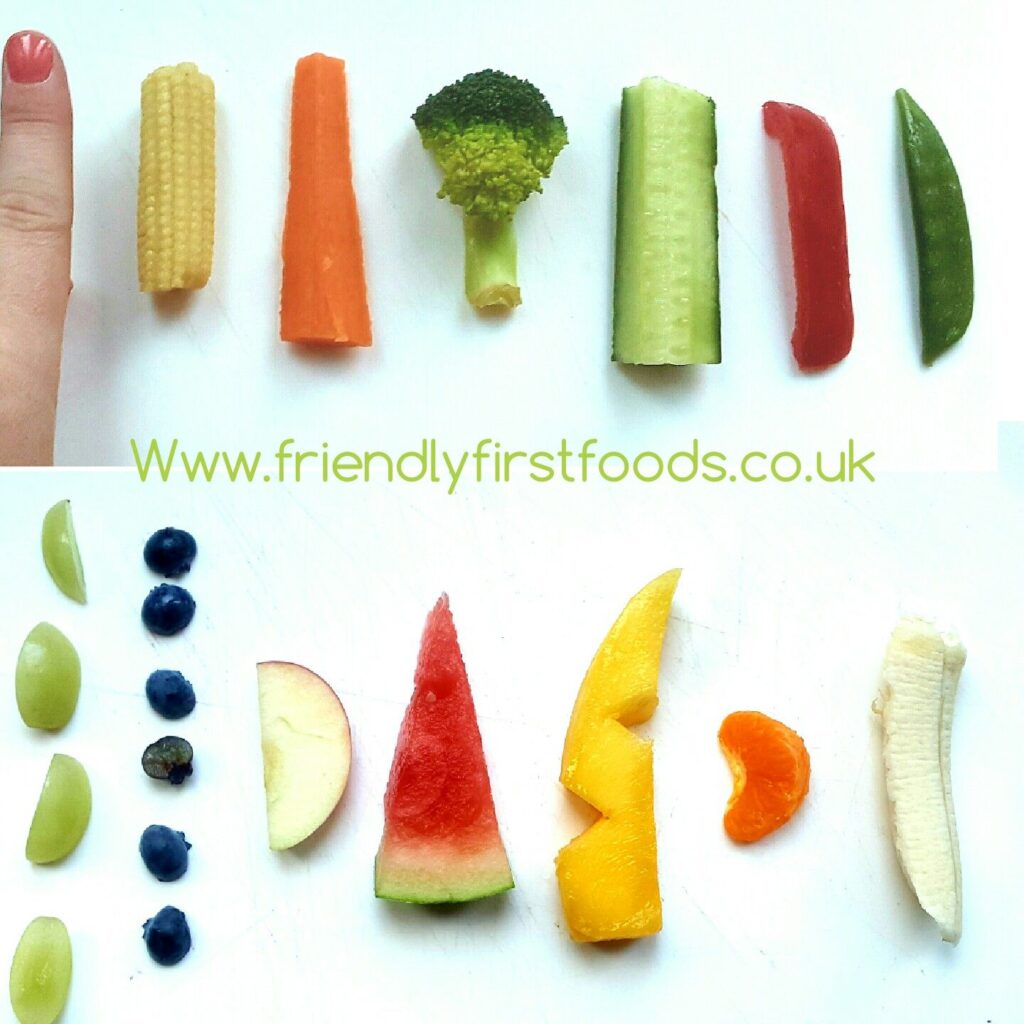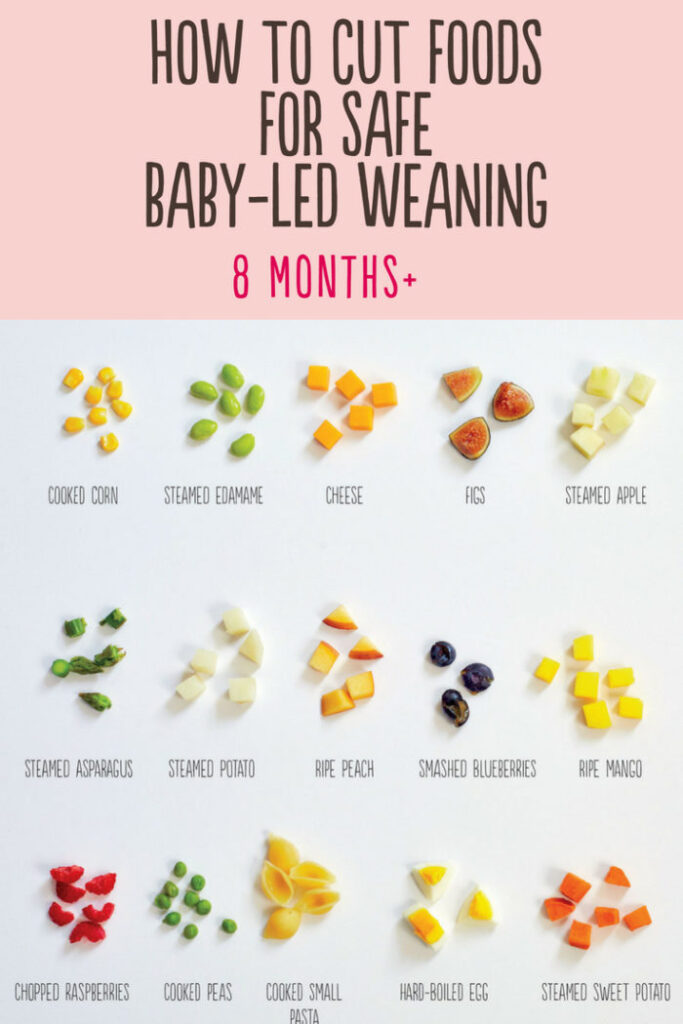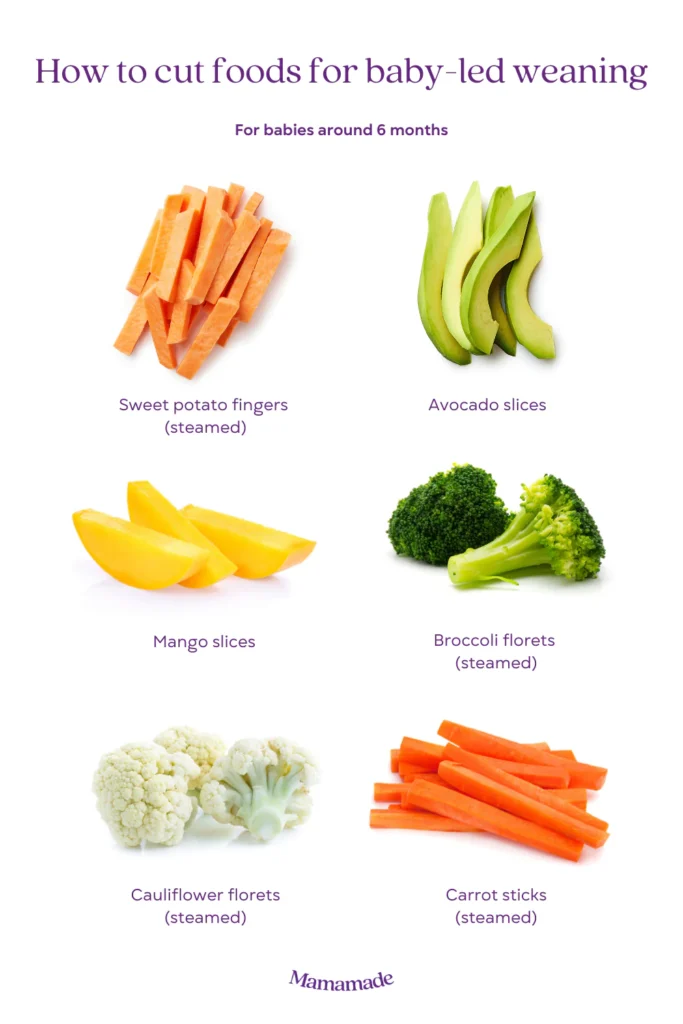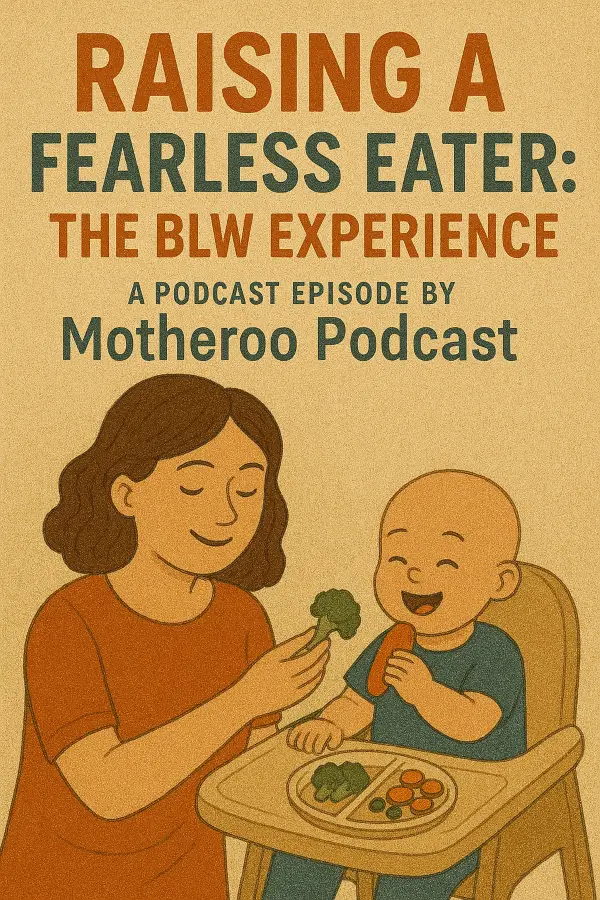Introduction
Baby-Led Weaning (BLW) represents a shift from traditional spoon-feeding methods towards allowing infants to explore and consume solid foods at their own pace. While BLW emphasizes autonomy and sensory exploration, it necessitates careful consideration of food safety, nutritional balance, and developmental readiness. This article synthesizes research findings to offer practical guidance on implementing BLW effectively.
Food Preparation in BLW
Vegetables
Vegetables should be soft-cooked and cut into manageable sticks or shapes that infants can grasp. For example:
- Carrots and parsnips: Steam or boil until soft, then cut into sticks.
- Broccoli and cauliflower: Cook until tender and offer as florets with the stem as a handle.
- Sweet potatoes: Bake or steam, then cut into wedges or thick slices.
Fruits
Fruits offer a natural sweetness and variety of textures. Prepare them as follows:
- Bananas: Peel and offer in large chunks or halve lengthwise.
- Avocado: Peel, remove the pit, and cut into slices or wedges.
- Soft fruits (e.g., peaches, melons): Peel if necessary and cut into large pieces or slices.
Meats
Meat should be cooked thoroughly and presented in a form that is easy for infants to handle:
- Chicken: Cook until tender and offer as strips or with the bone as a handle (e.g., drumsticks).
- Beef or lamb: Slow-cook to ensure softness and cut into strips or chunks.
- Fish: Ensure it is deboned and offer in large flakes or chunks.
Precautions and Strategies
Choking Prevention
- Texture and size: Foods should be soft enough to be mashed between the gums and cut into sizes that minimize choking risks.
- Avoid hard foods: Nuts, raw carrots, apples, and similar hard foods should be modified (e.g., grated or cooked) to reduce choking hazards.
- Supervision: Always supervise meals and encourage infants to eat sitting upright.
Nutritional Adequacy
- Iron-rich foods: Include iron-fortified cereals, cooked meat, and leafy greens to meet the infant’s iron requirements.
- Variety: Offer a wide range of foods to expose the infant to different textures and nutrients.
- Breastmilk or formula: Continue breastfeeding or formula feeding to ensure adequate nutrition.
Developmental Readiness
- Signs of readiness: Look for signs that the infant is ready for solids, such as being able to sit up with minimal support, showing interest in food, and the ability to grasp objects and bring them to the mouth.
- Pacing: Allow the infant to set the pace, exploring foods without pressure to consume specific amounts.
Conclusion
Baby-Led Weaning offers an approach to complementary feeding that supports infants’ autonomy, sensory exploration, and participation in family meals. By adhering to guidelines on food preparation, choking prevention, and ensuring nutritional adequacy, BLW can be a safe and enjoyable experience for both infants and their families. Careful observation of developmental readiness and ongoing supervision are crucial to its successful implementation.
Citations:
[1] https://www.frontiersin.org/articles/10.3389/fped.2022.992244/full
[2] https://www.mdpi.com/2072-6643/14/12/2372
[3] https://www.scielo.br/j/rpp/a/Gt4V9LBzQQM689XBjLfZkQw/?lang=en
[4] https://www.frontiersin.org/articles/10.3389/fnut.2022.890843/full
[5] https://parentingtranslator.substack.com/p/ultimate-guide-to-baby-led-weaning
[6] https://www.ncbi.nlm.nih.gov/pmc/articles/PMC5934812/
[7] https://www.ncbi.nlm.nih.gov/pmc/articles/PMC6958549/
[8] https://www.mdpi.com/2072-6643/4/11/1575
[9] https://www.mamazillafood.com/how-to-cut-food-for-babies/
[10] https://bmjopen.bmj.com/content/6/5/e010665
[11] https://www.elsevier.es/en-revista-enfermeria-clinica-35-articulo-is-baby-led-weaning-approach-an-S1130862119301056
[12] https://bmcpediatr.biomedcentral.com/articles/10.1186/s12887-015-0422-8
[13] https://www.ncbi.nlm.nih.gov/pmc/articles/PMC5438437/
[14] https://www.ncbi.nlm.nih.gov/pmc/articles/PMC6024590/
[15] https://www.ncbi.nlm.nih.gov/pmc/articles/PMC9171390/
[16] https://www.ncbi.nlm.nih.gov/pmc/articles/PMC9227137/
[17] https://bmjopen.bmj.com/content/2/6/e001542
[18] https://www.sciencedirect.com/science/article/am/pii/S0929693X22001828
[19] https://onlinelibrary.wiley.com/doi/full/10.1111/jhn.13078
[20] https://www.sciencedirect.com/science/article/abs/pii/S0882596323002464






